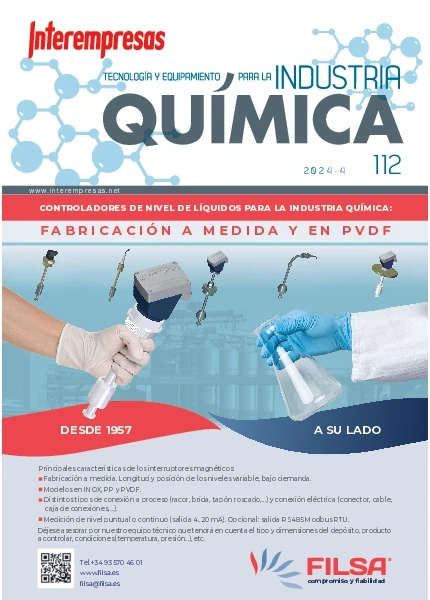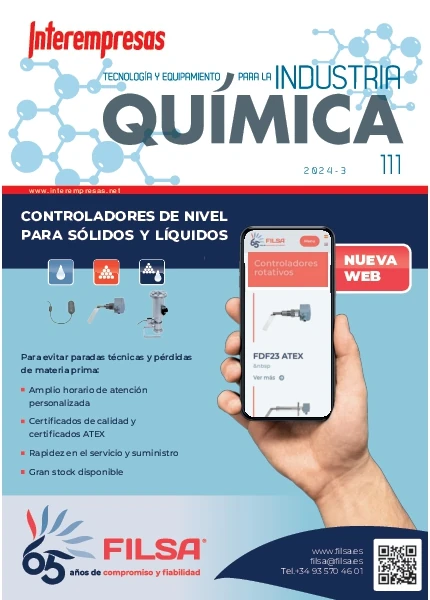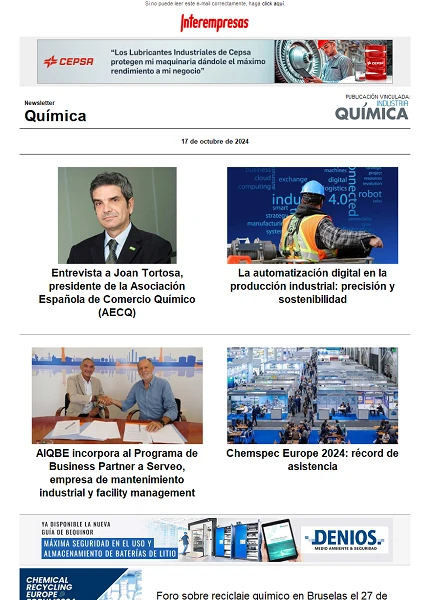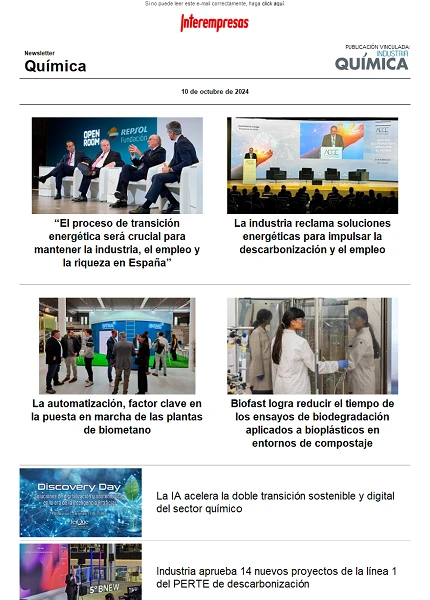Treatment of contaminated soils. Strategies for action
Contaminated soils of Inerco unit01/02/2006
For the investigation of a soil when the bear suspected of contamination, they raise a series of stages, which idelogical in Figure 1.
If once made all the stages of assessment, be concluded that the soil is contaminated, would imply the need for the implementation of an environmental recovery of the affected lands, with costs in the majority of cases can be high.
As contaminated soil is an administrative act, whose criteria is supported on this site involves risk to human health or the environment.
Media and associated costs necessary for the environmental recovery of a contaminated site, are fundamentally dependent on the following aspects:
- Features of the site
- Legal and regulatory dimensions
- Availability of appropriate technologies to deal with the problem.
Thus, the process of cleaning a site must be perfectly justified and designed with the utmost care. The elaboration of the draft includes fieldwork at the site, lab work and work of Cabinet.
Field work is primarily in the characterisation of the setting of exposure, including the sampling of the location and identification of populations at potential risk.
Laboratory work consists in carrying out tests to determine experimentally if the technology you choose to restore the soil is really adequate to do the job. Sometimes, when there is no toxicological information and no reliable estimates can model, they have to do laboratory toxicological studies.
The work of Cabinet sits mainly in obtaining and processing information, selection and use of mathematical models to predict transport and properties of the pollutants. With field and laboratory work, more information becomes the recovery project risk assessment and the decision to intervene or not.
Should it decide the intervention, sets out the objectives of reduction of the levels of exposure, we analyze the technological alternatives available to destroy or contain contaminants, selecting the most appropriate. Ends the recovery project with the elaboration of the operational plan which sets out the work carried out since the preparation of the ground, the cleaning of the media that contain toxic substances, until the closure of the site.
Research of soil and recovery projects studies is a multidisciplinary work requiring input from scientists, engineers and technicians from very different disciplines (toxicologists, chemists, doctors, geologists, hydrologists, etc) with wide in the field of risk assessment and environmental recovery experience. The different stages of studies carried out are as follows: exploration and historical study; detailed investigation and reclamation project.
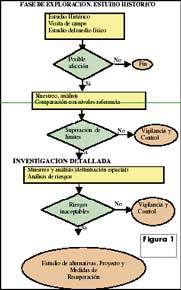
Exploration and historical study
- Take a first view of the existence of a problem caused by pollutants from anthropogenic origin.
- The development of a conceptual model of the site that are considered in a qualitative manner the sources of pollution, exposure routes and potential recipient.
- The identification of decisions is expected to take with the aim of: define type and amount of information that is going to need and design studies to be done to collect and/or generate such information.
- The identification of specific activities that are going to do to make sure that information is always directed to support risk assessment activities and selected models consistent with the data that are feasible to obtain or generate.
Detailed research
In this study, that is also known as "the site characterization", carried out the collection and analysis of samples from field according to the plan developed in the study of global vision. The information collected and generated until the conclusion of the risk assessment and the performance of the tests for the selection of the suitable treatment is processed.
The results of the risk assessment are used to:
- Documenting the magnitude of the risk in the site and the primary causes of that risk.
- Help determine if it is necessary to intervene.
- To determine the residual levels of contaminants that may be on the site.
- Establish and modify the preliminary recovery goals.
- Establish the final goals of recovery.
- Basing the decision "not to act", when appropriate.
- Bases of comparison in the evaluation of the different alternatives of recovery.
- Determine the risks expected during the recovery process.
Risk assessment is the part of the project of recovery which based the decision to intervene or not on a contaminated site. At this point is demonstrated the importance of ir redefining the objectives of each stage of the investigation of a potentially contaminated soil. This risk assessment in the phase of recovery measures can and should be held jointly with in the detailed investigation phase to optimize efforts, reduce costs and time used in the global process of the research of the soil.
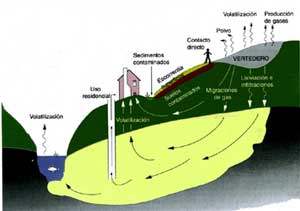
Reclamation project
The recovery project consists of the following parts:
- Establishment of the objectives of the recovery
- Development of alternatives for recovery
- Preliminary selection of technology options
- Detailed analysis of selected alternatives.
It is presented the detailed investigation and the recovery project as if they were sequential steps, however in practice they are interactive and concurrent processes. Detailed research information influences the selection of technology options to be considered in the recovery project. On the other hand, the selection of the set of technologies to assess the recovery projects, influences very significantly on the amount and type of information that has to generate in the detailed investigation:
- Technical evaluation of the hazards that represents a location with hazardous or polluting waste without control.
- Characterization of the possible routes of exposure.
- Evaluation of the alternatives for recovery (including the advantages and disadvantages regarding).
- Selection of the alternative most appropriate, including the analysis of the selection criteria.
Nine evaluation criteria can be set to select the technology most appropriate recovery, including two criteria of tolerance for the tolerable levels of contaminants that may be on the site after the process of cleaning (criteria 1 and 2)modification two criteria are not based on risk assessment (criteria 8 and 9) and five criteria (criteria 3-7) economic balance.
How to prepare for the new R.D.?
We consider of vital importance that companies have guidelines and criteria to facilitate the management and performance of all its leaders, both at the corporate level and at the level of the affected facilities, integrating the factor soil within the environmental management of the company policy.
Technology of recovery assessment criteria
- Protection of human health and the environment
- Pursuant to the GRL (at least that they can excuse)
- Definitive solutions and effectiveness in the long term
- Reduction in toxicity, mobility or volume during and at the end of the treatment
- Effectiveness in the short term
- Applicability
- Cost
- Acceptance by local authorities
- Acceptance by the community.


